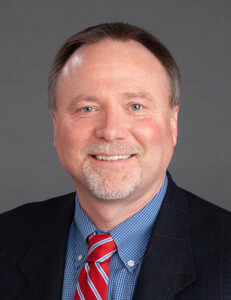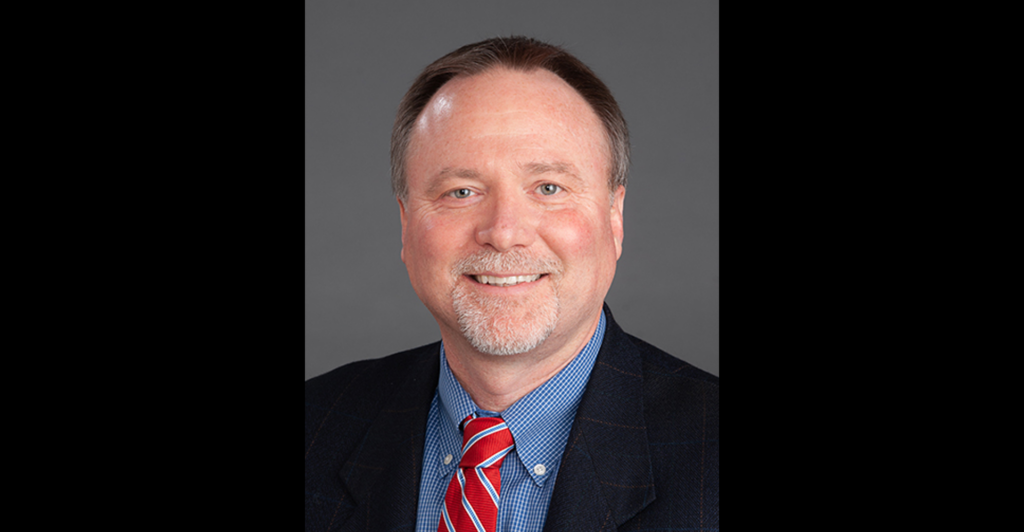By Daniel J. Gironda
In the Paths to Science Policy series, we talk to individuals who have a passion for science policy and are active in advocacy through their various roles and careers. The series aims to inform and guide early career scientists interested in science policy. This series is brought to you by the GSA Early Career Scientist Policy and Advocacy Subcommittee.

Here I sit down with Lance David Miller, Professor of Cancer Biology, Director of the Breast Cancer Center of Excellence, Associate Director of Basic Sciences, and Co-Director of the Cancer Genomics Shared Resource at Wake Forest School of Medicine. We discuss generating interest in research for up-and-coming academics, the resources available to young scientists, and how policymakers have helped direct funding for young investigators.
Dan: Tell us, what brought you to your career today?
Lance: I’ve always identified myself as being a scientist. Even as a kid, I had these tendencies to want to know how things worked. I loved the natural world. I think I get it from my father, who was a plant pathologist. He used Mendelian genetics to breed tobacco back in the 70s and 80s, when nobody was really doing this. That was always interesting to me and probably has something to do with why my work deals a lot with genetics and genomics today. But I didn’t have my sights set on cancer research or genomics in college, so I decided to go for a master’s in biotechnology at East Carolina University. I really liked the idea of maybe working for some company that develops molecular tools for research. But after I got the degree, my career plans changed. And I thought if I’ve come this far, why not apply what I know towards a major health problem? And why not cancer? Because it affects so many people and it’s something that we should be able to figure out. So, I interviewed at UNC Chapel Hill for a position in their PhD program in Cancer Genetics and Molecular Biology. I started doing cancer research and never looked back.
I became very interested early on in genetics and genomics and some very new technologies that were just coming into play at the time, like microarray technology. The whole revolution of printing DNA microarrays and studying how genes are expressed on the scale of 10s of 1000s at a time, simultaneously, was brand new and being pioneered out of Stanford. And it turned out that my mentor had a connection with the lab at Stanford who was really making microarray technology happen. So, he arranged it so that I could go out there, learn that technology, and bring it back. And that really shaped my career in a huge way because it was a very new technology—the first “omics” technology. So that became a launching pad for the rest of my career. Right as I was completing my PhD research, my mentor was recruited to Singapore. Singapore was putting a lot of money into health sciences and biosciences and wanted to develop basically a version of NIH in Southeast Asia. I then went to Singapore right after receiving my PhD and was there for seven years. As a scientist employee of the Singapore government, I worked with a team to establish the Genome Institute of Singapore, and we had lots of great funding to do real cutting-edge genomics work in cancer.
Dan: On that end, I know Singapore was willing to shell out resources to start these new programs and promote new technologies so that you could open that door to start the cancer genomics research institute. After coming back to the states and having this academic dogfight for grants, is there anything policymakers or advocates can do to help promote funding for prospective research over here?
Lance: I think policymakers have done some really good things. When I came back [from Singapore], I was still a young to mid-level career scientist. It was very competitive to get grants, particularly for someone like myself, who had not been in that environment. I was like an animal raised in the zoo being put out into the wild and having to survive on my own—because in academia you have to learn to survive. Most institutions require that young faculty have a timeline for getting R01s and then hold you to it because, these days, basic dollars from the institution alone are unable to fund researchers and their labs. When I was applying for grants, federal grant funding was on a multi-year decline, as opposed to now, where available grant dollars are on a multi-year climb. So back then, less than 10% of big grants like R01s were getting funded. In that competitive environment, there was a lot of job dissatisfaction. How do you survive and stay passionate about your work? This was a big question and chased a lot of people away from academia and into the commercial sector.
Dan: For young scientists starting their careers, that’s one of the biggest concerns to us—that consistent battle, always scrounging for grants and just trying to survive.
Lance: It is apparent that mechanisms were needed to attract young scientists to academia. Policies were enacted that created funding opportunities for early career investigators specifically so that they were not competing against senior scientists. New policies extended those pay lines dramatically for early career investigators, even doubling them in some cases. So now, early career investigators regularly receive a score boost to help them compete with the more senior researchers. This has been very valuable for keeping young blood in the game. Also, I mentioned earlier that grant pay lines were on a downward trend at one point but recently are on an upward trend. This, too, is due to changing policy: the results of lobbyists and a change in thinking among policymakers that more funds, not less, should be put into science and human health. In 2020, there was a significant push in government to really increase NIH and other government research funding over the coming years, one example being the 21st Century Cures Act. So now, there’s sort of a promise and commitment to increase funding year after year so that the pay lines keep going up to fund research and to fuel the passion for people like myself and my students.
Dan: To wrap up, what would you want to see from policymakers, scientists, and individuals in the research community moving forward to promote Policy and Advocacy changes to generate more funding for prospective research?
Lance: Policies designed to support and promote visibility of the importance of research and its financial needs are going to be valuable. One thing that impressed me, as an example, was a movement called Stand Up to Cancer. This movement had a lot of celebrities and sports clubs and other high-profile organizations involved. When popular culture backs a movement, society responds, and wheels start to turn. When you have students in their late teens and early 20s, who are trying to make career decisions, how do you get the message to them that academia is not a place of struggle and that you have an opportunity there to guide your own research and to make big strides? I think there continues to be a need for the development of tools for students to not only appreciate what can be accomplished in cancer research but also what that life would look like and what the options are on the career level. In all scientific disciplines, there are pros and cons, there are tripping stones and fast paths all along the road to a highly satisfying career, or even the road to greatness. An important question moving forward is how can new policies move this information into the hands of young people today?




